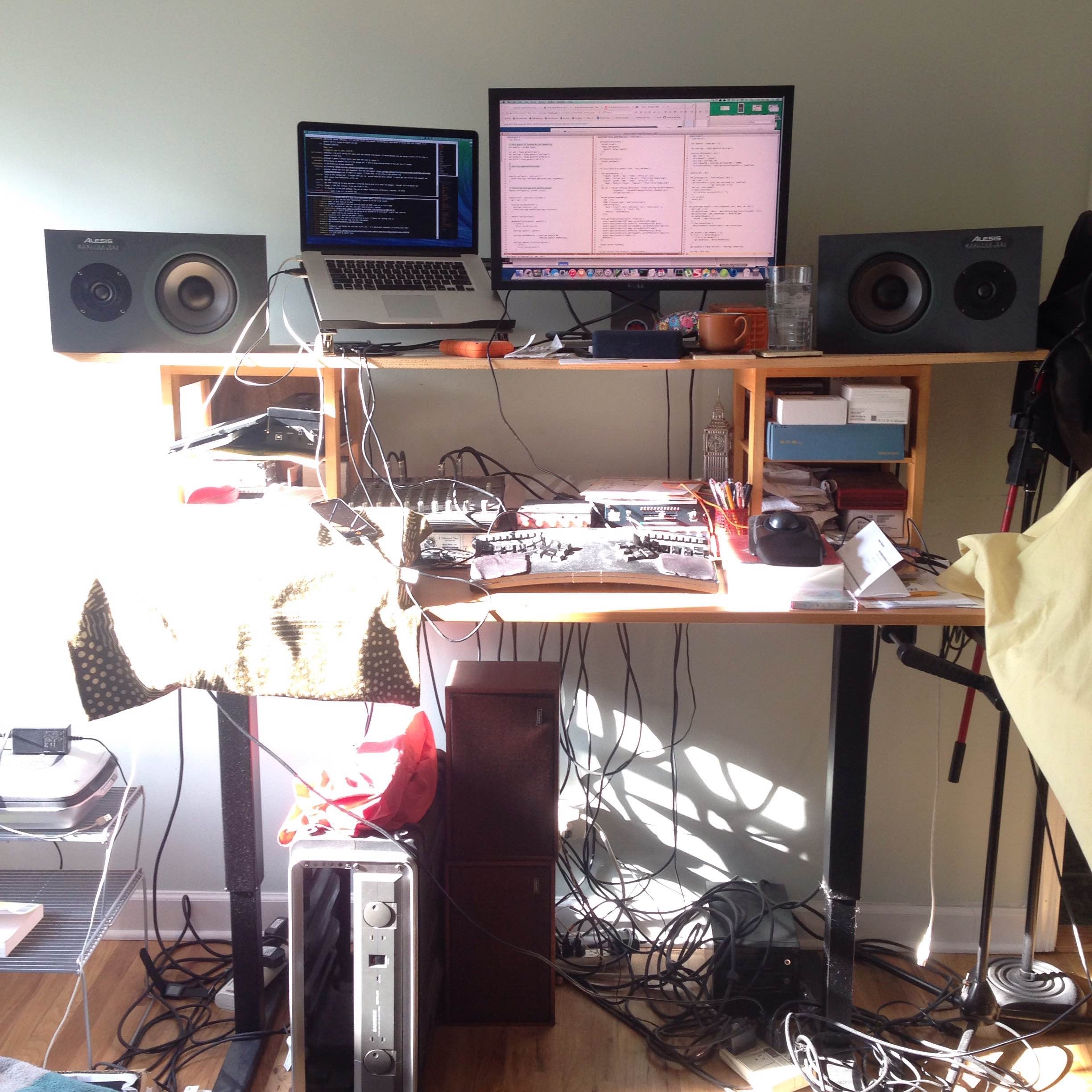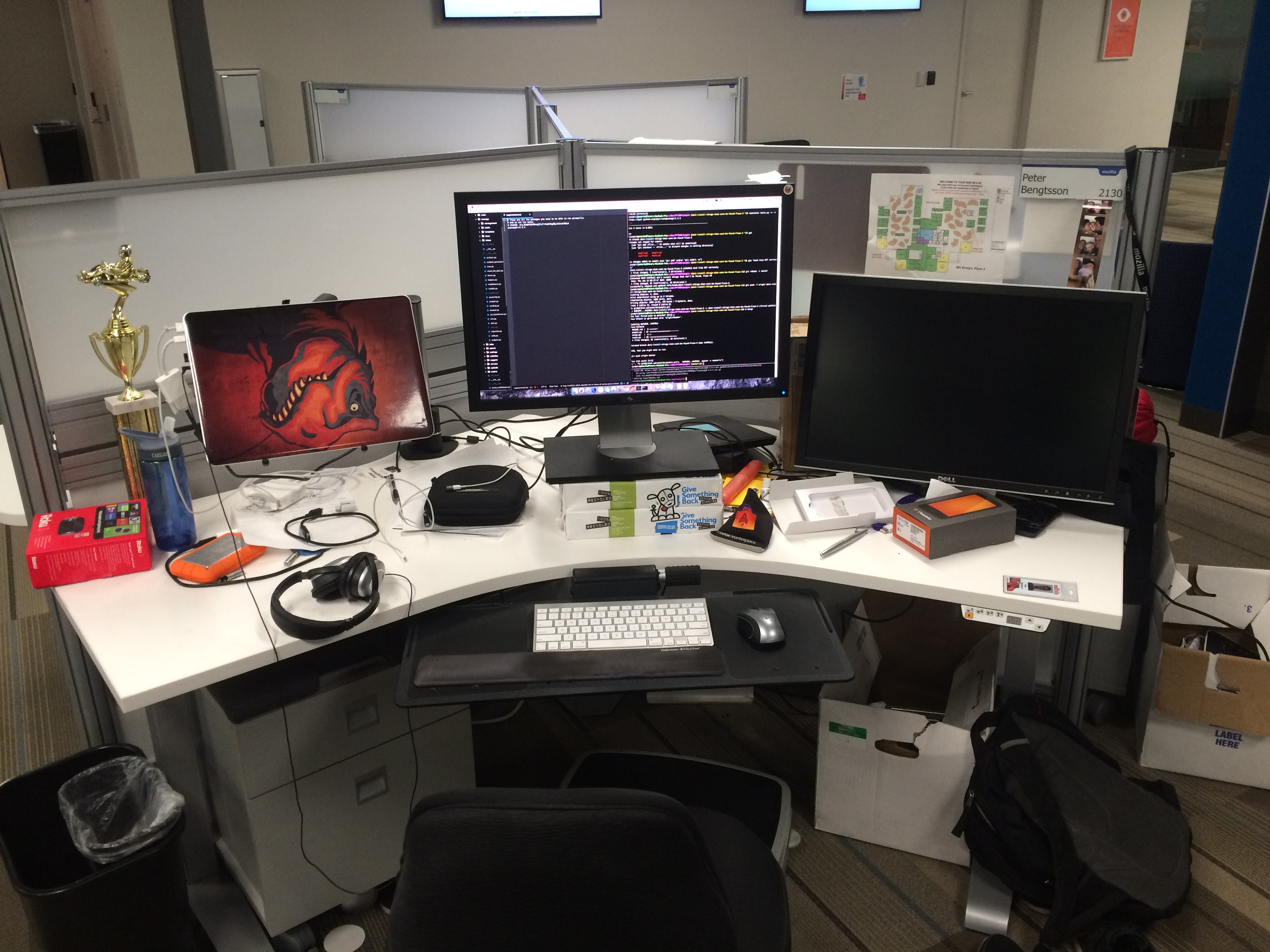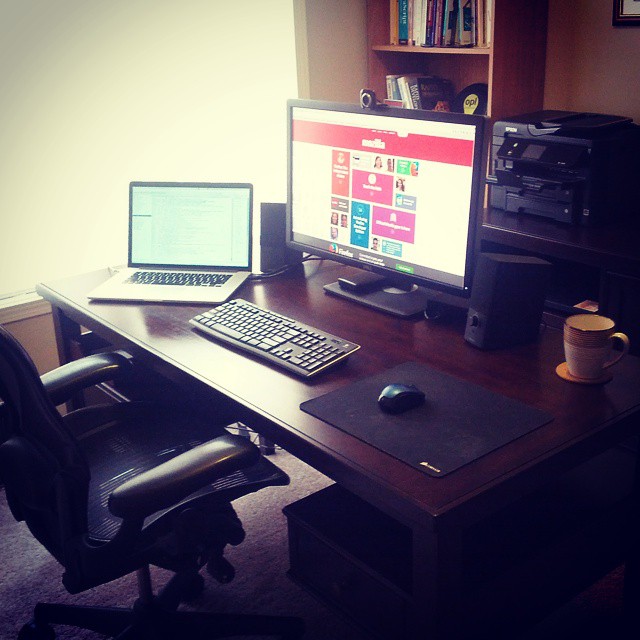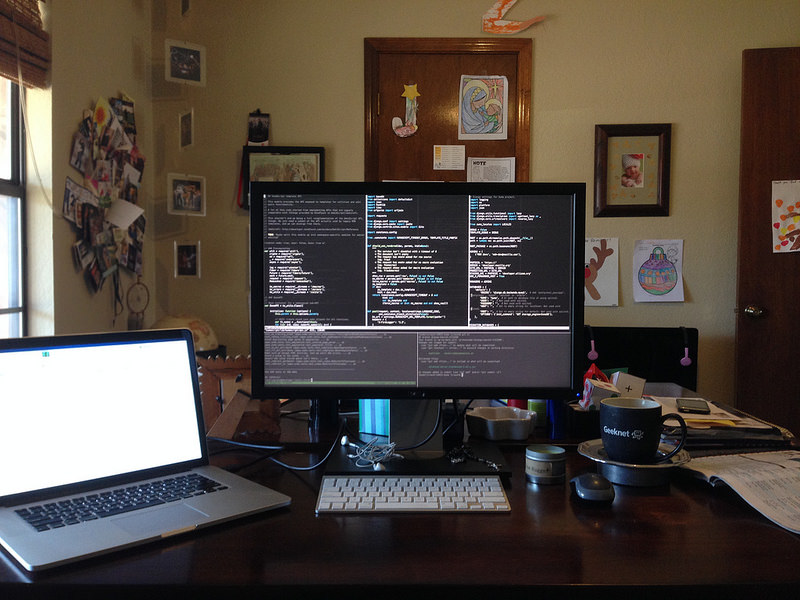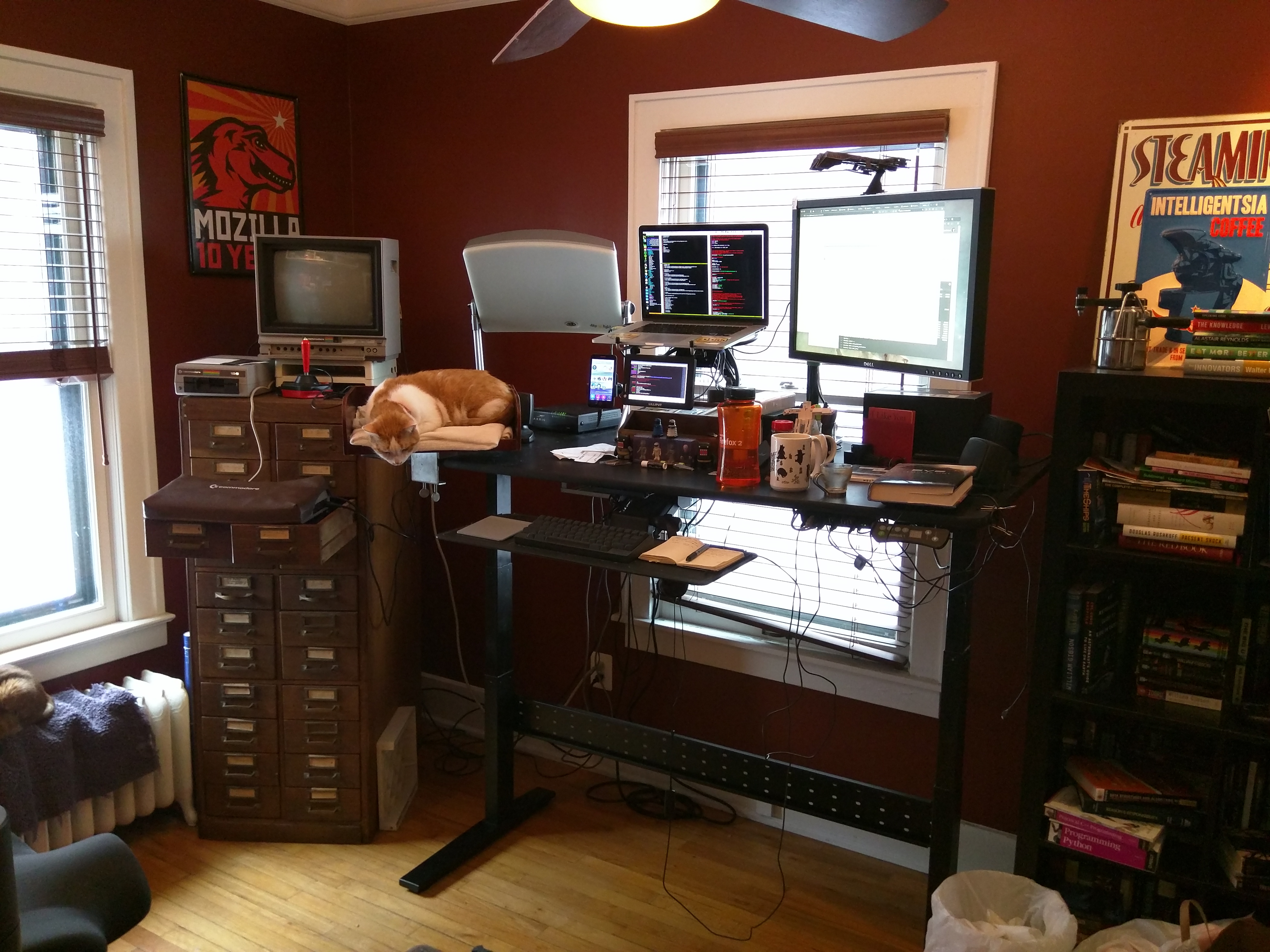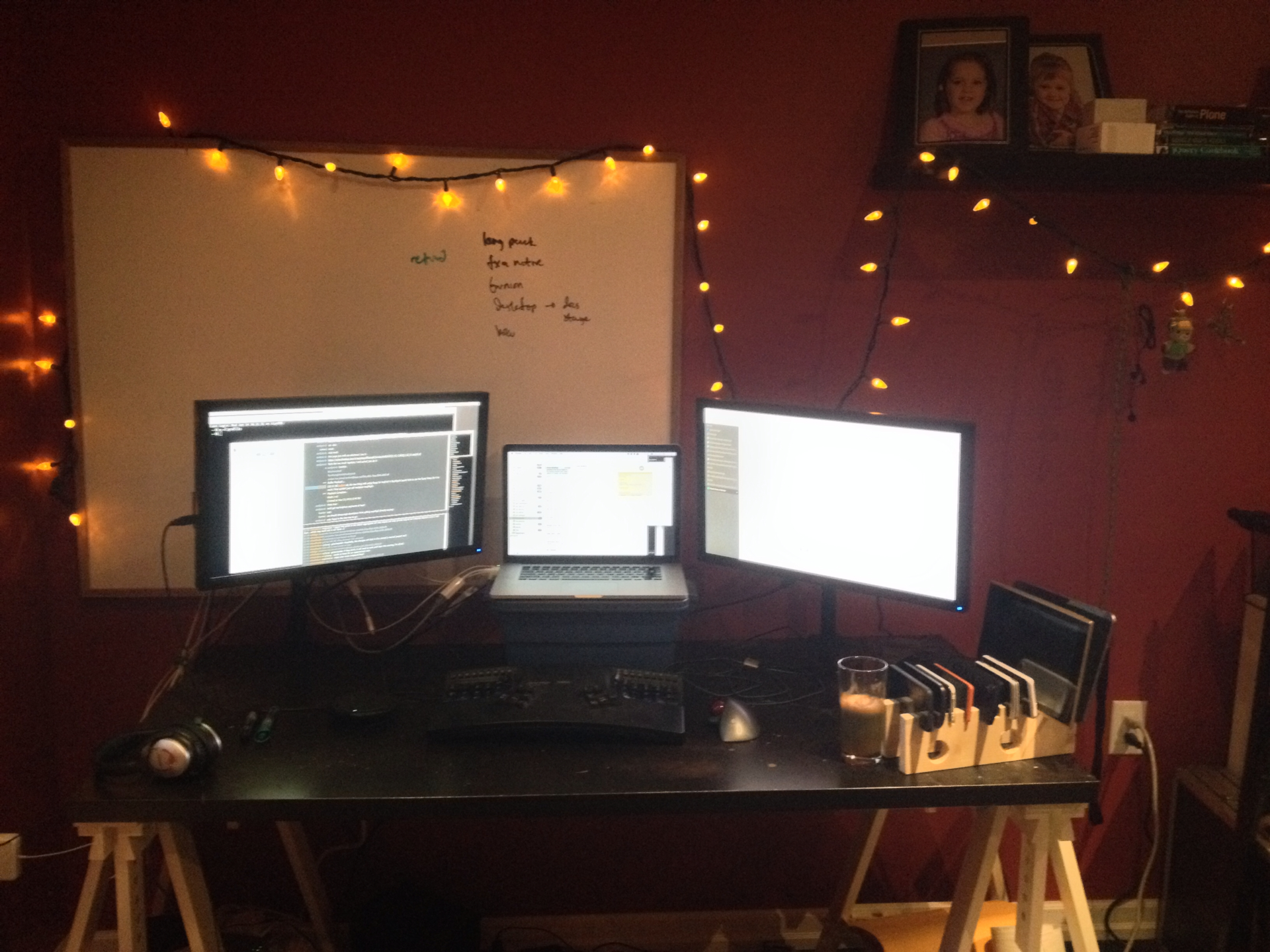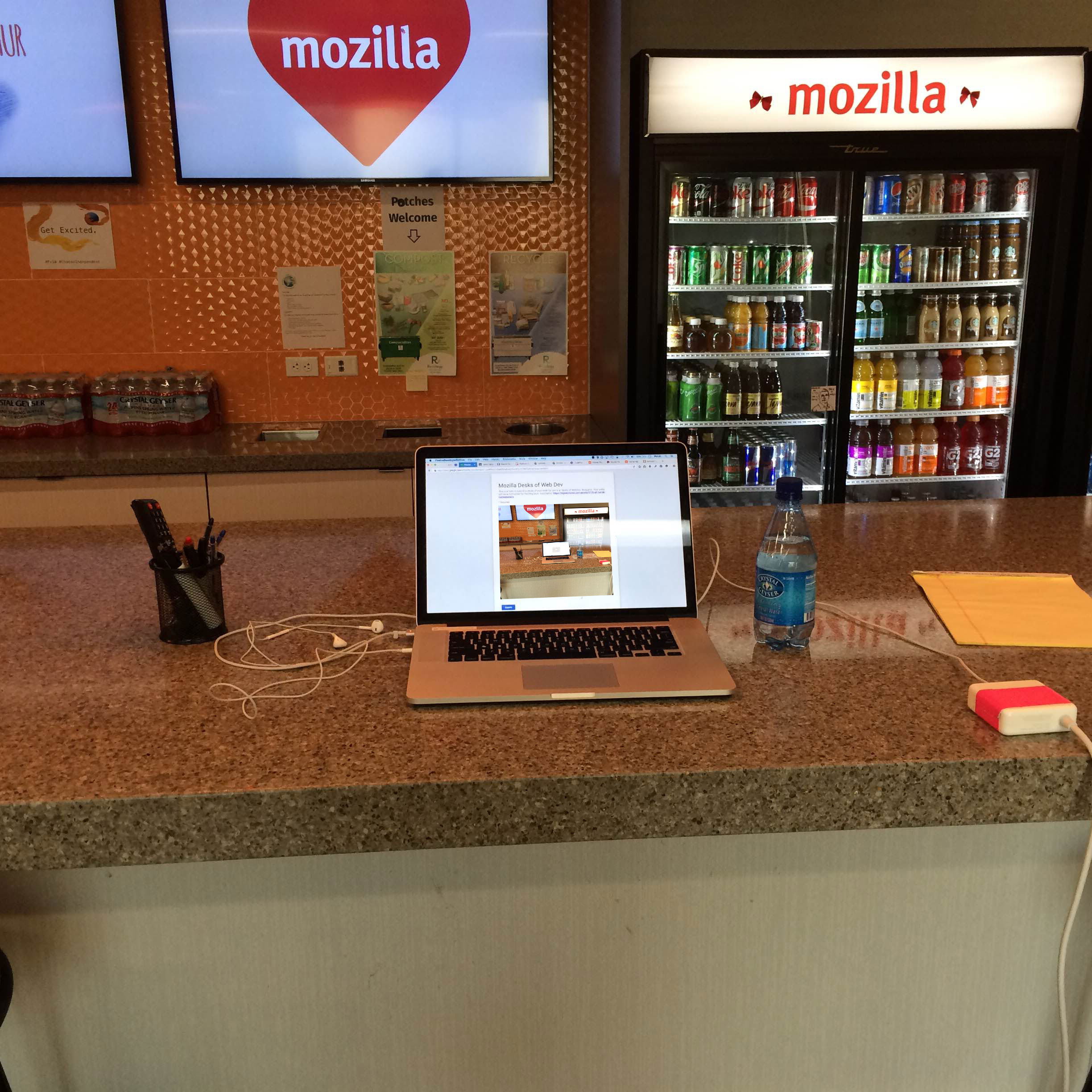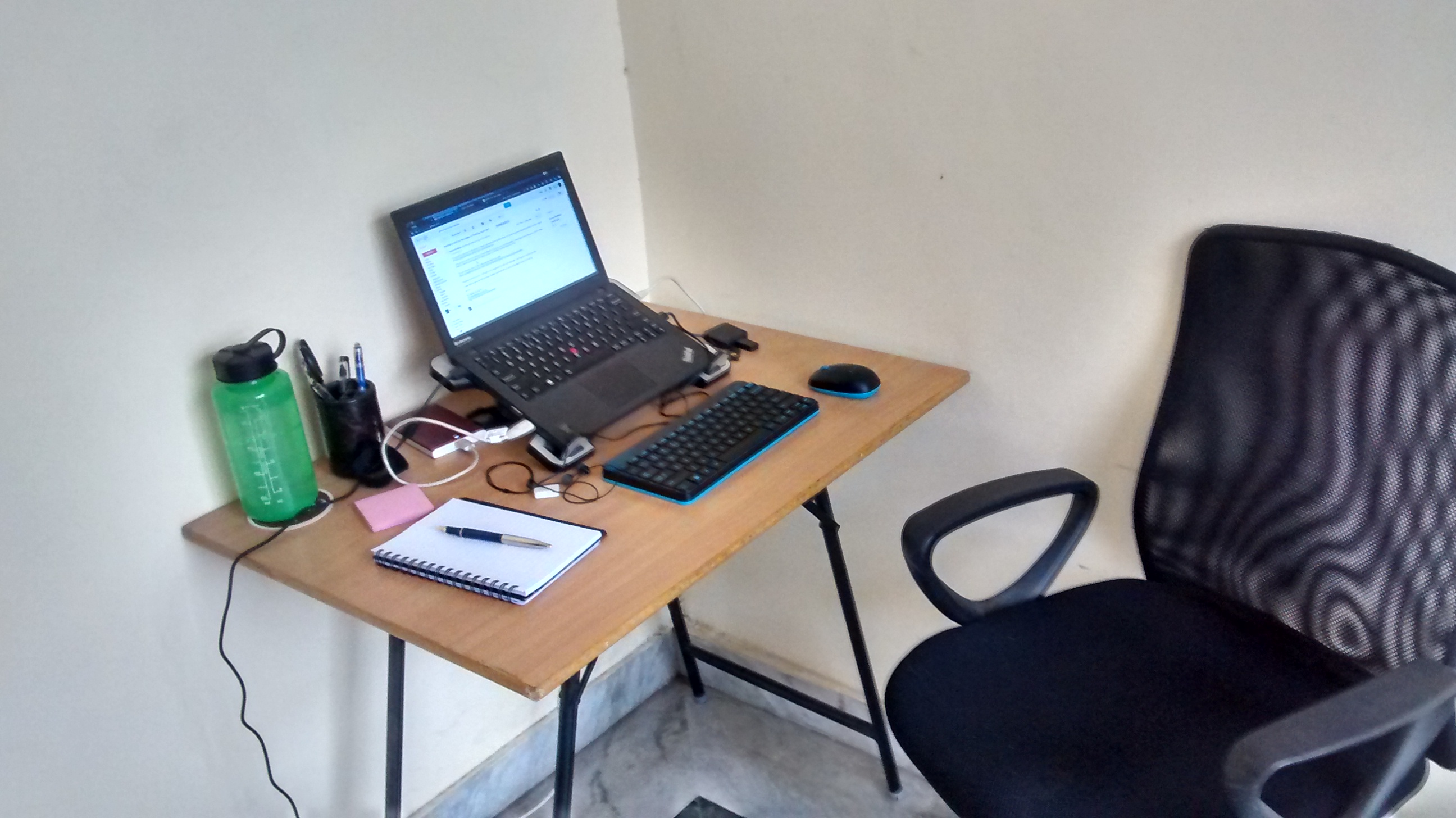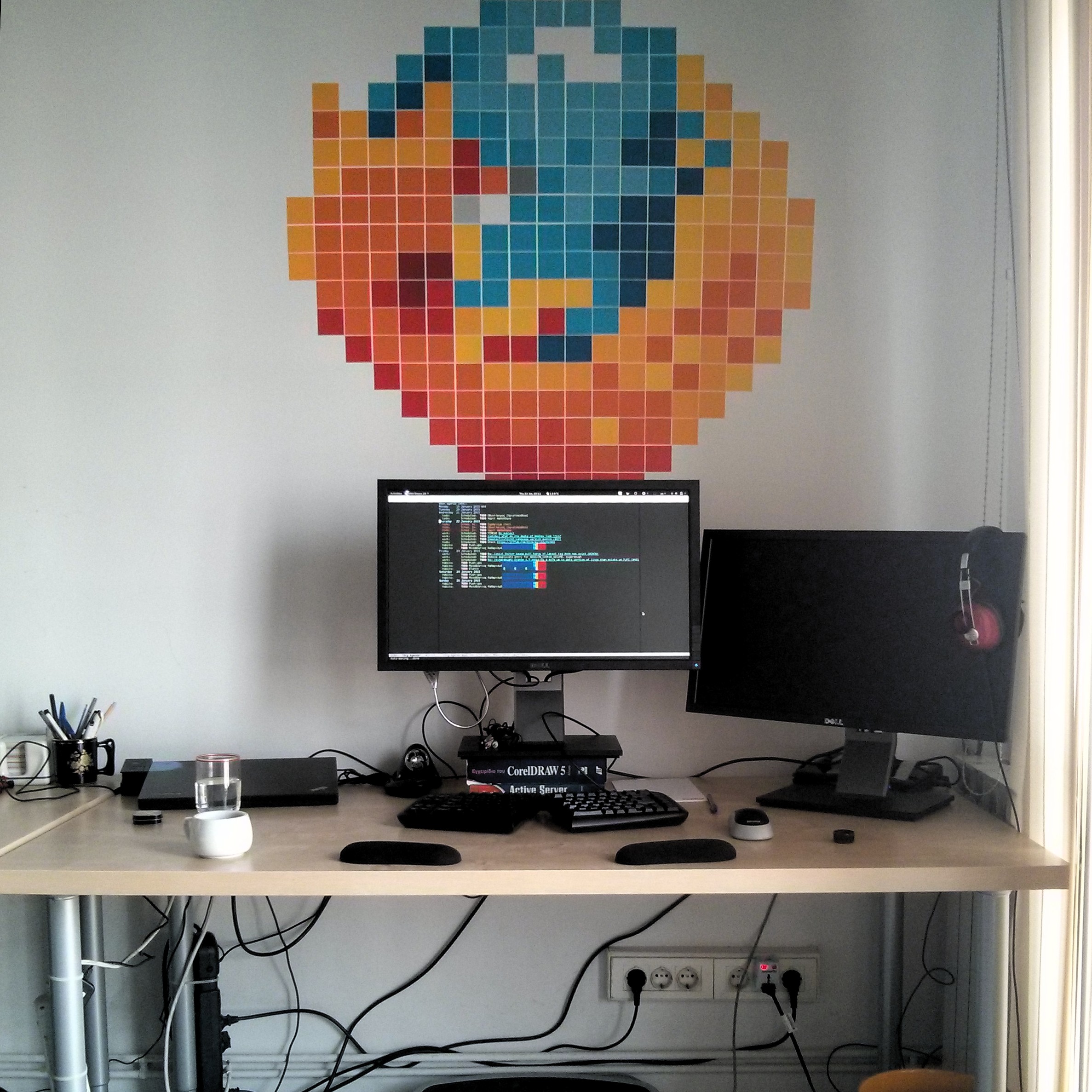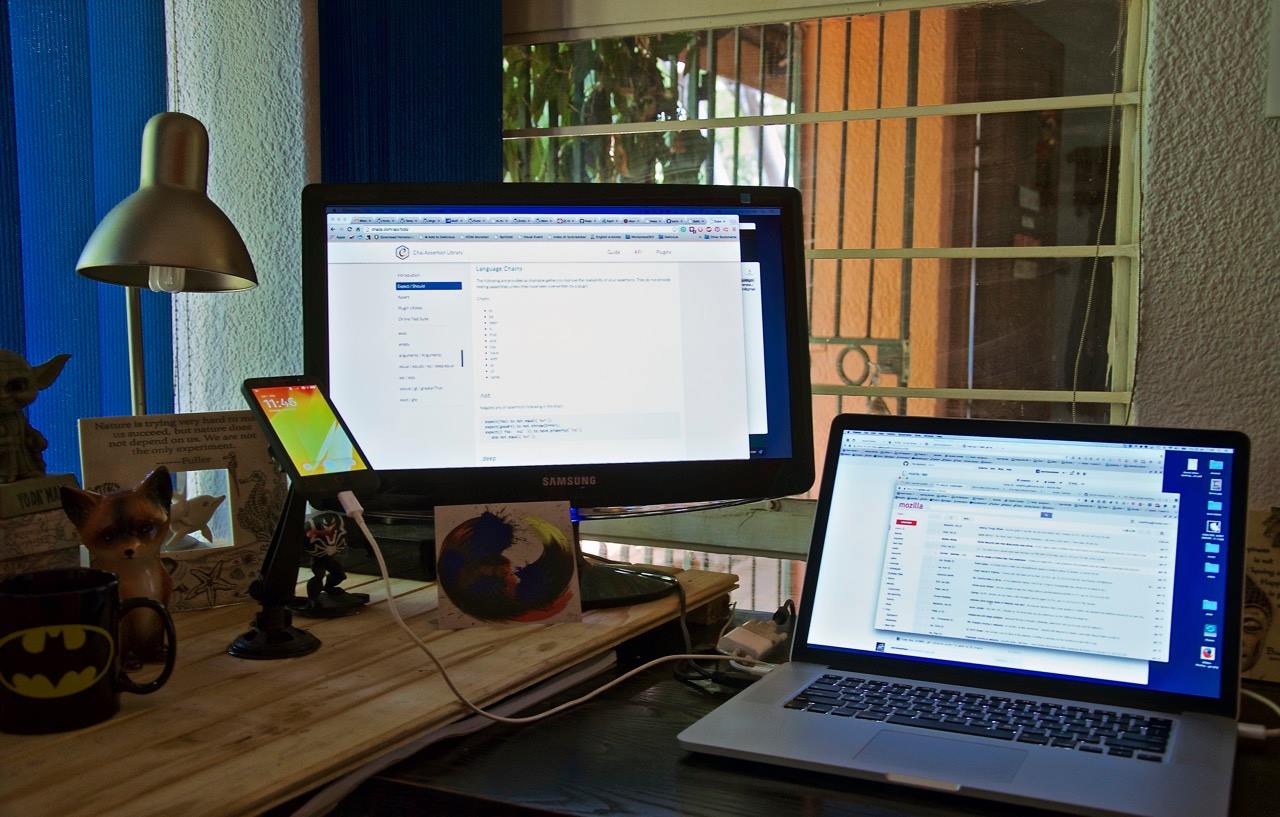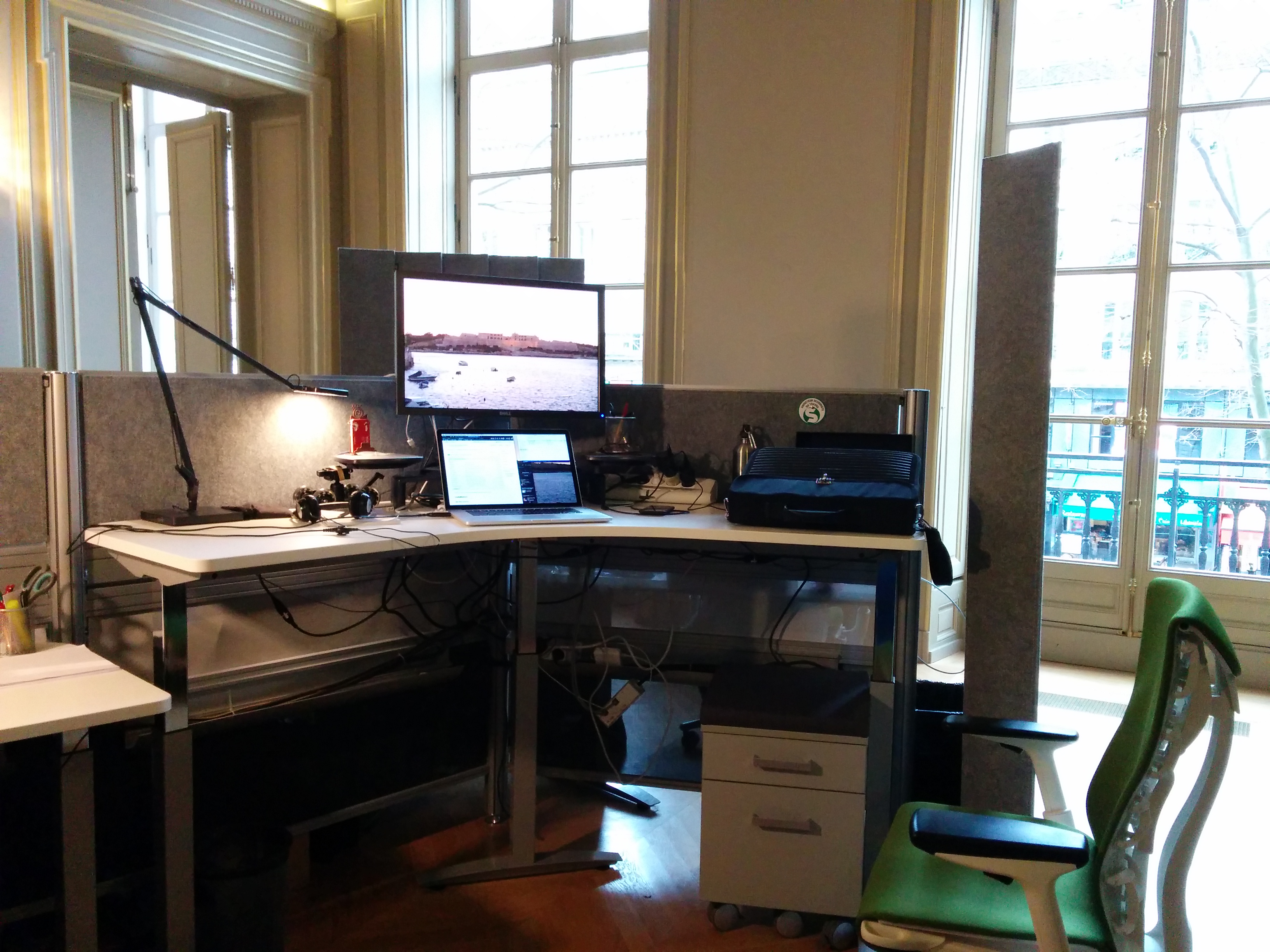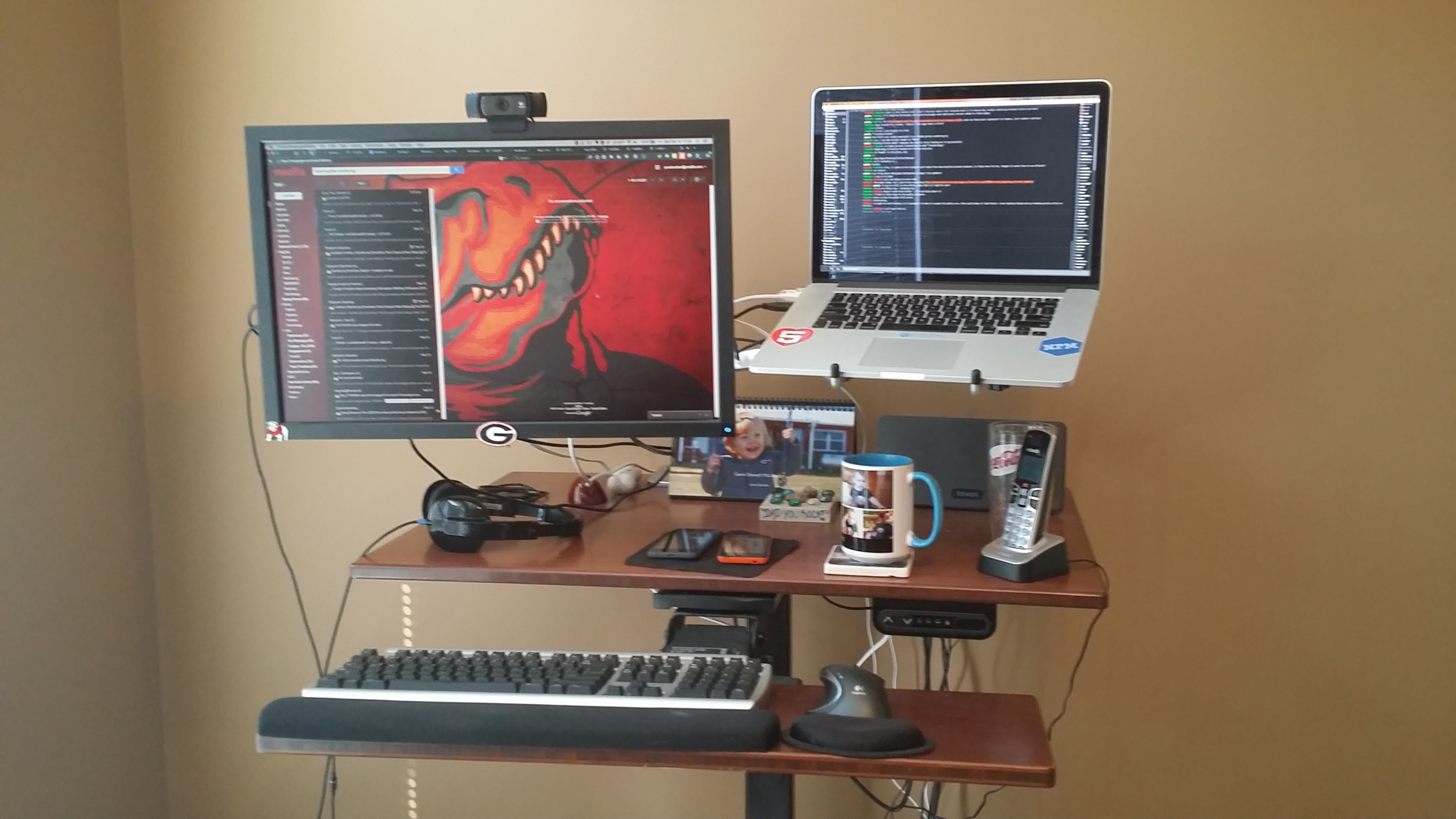Добавить любой RSS - источник (включая журнал LiveJournal) в свою ленту друзей вы можете на странице синдикации.
Исходная информация - http://planet.mozilla.org/.
Данный дневник сформирован из открытого RSS-источника по адресу http://planet.mozilla.org/rss20.xml, и дополняется в соответствии с дополнением данного источника. Он может не соответствовать содержимому оригинальной страницы. Трансляция создана автоматически по запросу читателей этой RSS ленты.
По всем вопросам о работе данного сервиса обращаться со страницы контактной информации.
[Обновить трансляцию]
Mozilla Release Management Team: Firefox mobile 36.0.1 to to 36.0.2 |
A mobile only release. The main driver for this release is a fix for a startup crash on HTC One M8 devices (Verizon) with Android 5.0.1. We took also as ride along two patches. The first one will help the diagnostic of a crash, the second fix a crash with Flash videos.
- 4 changesets
- 7 files changed
- 46 insertions
- 42 deletions
| Extension | Occurrences |
| java | 4 |
| txt | 2 |
| sh | 1 |
| Module | Occurrences |
| mobile | 5 |
| config | 1 |
| browser | 1 |
List of changesets:
| Eugen Sawin | Bug 1051556 - Simplify GeckoEditable exception messages. r=snorp, a=sledru - f91f9947247a |
| James Willcox | Bug 1140830 - Don't try to use a null JSONObject in SiteIdentity.update(). r=rnewman, a=sledru - 050698a3df5e |
| James Willcox | Bug 1118216 - Stop recycling Message instances, as it's unnecessary. r=rnewman, a=sledru - a541bb82052f |
| James Willcox | Bug 1142459 - Fix mixed content shield notification broke by Bug 1140830. r=rnewman, a=sledru - 7c51bb7366b3 |
http://release.mozilla.org/statistics/36.0.2/2015/03/17/fx-36.0.2.html
|
|
Byron Jones: happy bmo push day! |
the following changes have been pushed to bugzilla.mozilla.org:
- [1139872] The URL in bugmail microdata has the ‘#’ URI encoded, causing the links to break
- [1140764] “suggested reviewers” menu overflows from visible area if there are many reviewers.
- [1141440] OPTION response for CORS requests to REST doesn’t allow X-Bugzilla headers
- [1143160] A review comment on bug 1131776 breaks splinter
- [1141452] Adjustment on the project flags (blocking-b2g and tracking-b2g)
- [1142399] invalid xmlrpc requests warns: Use of uninitialized value $file in substitution (s///) (Bugzilla/WebService/Server/XMLRPC.pm:114)
- [1132963] Automatically detect and redirect to Google doc URLs (akin to github-pr and rb handling)
- [1143536] product dashboard doesn’t honour product visibility
- [1143753] Update to Mozilla Recruiting Requisition Opening Process Template
discuss these changes on mozilla.tools.bmo.
Filed under: bmo, mozilla
https://globau.wordpress.com/2015/03/17/happy-bmo-push-day-131/
|
|
The Mozilla Blog: Please welcome David Bryant, Vice President of Platform Engineering |
We’re excited to announce that David Bryant is joining Mozilla today as our new Vice President of Platform Engineering.
David was most recently at Nokia where he served as Vice President of Advanced Engineering and focused on leading the global hardware and software engineering teams to accelerate new mobile product development. He brings with him significant experience in mobile, software architecture and engineering management having held executive leadership positions spanning engineering and marketing at Nokia, Sun and Bell Labs.
We’re thrilled to have David join Mozilla as we work to fulfill our mission of building the Internet as a global public resource open and accessible to all. We do this by building great products that help people take control of and explore the full potential of their online lives, while empowering them with technology, education and opportunity to advance the Open Web.
David’s background, experience and passion for technology, coupled with his commitment to building products and platforms that solve real world problems is an exceptional fit for Mozilla.
He will be based in our headquarters in Mountain View, California.
Please join me in welcoming David to Mozilla!
Chris
Background:
David Bryant, Vice President of Platform Engineering, Mozilla
|
|
Robert O'Callahan: Auckland University rr Talk Next Week |
I'm scheduled to give a talk at Auckland University next Wednesday on rr.
25 March 2015
12 - 1pm
Venue: 303S - 561, City Campus
Host: Department of Computer Science, University of Auckland
Note: Informal discussion and light refreshments 1 - 2 pm
Speaker: Dr Robert O'Callahan
Abstract: Mozilla's browser developers find debugging expensive and frustrating, especially when bugs are non-deterministic. Researchers have proposed to expedite debugging by recording, replaying and analyzing program executions, and in theory such techniques are well-understood, but they have not yet been widely adopted. Mozilla Research aims to understand and bridge this adoption gap by building a record-and-replay-based debugger that Mozilla's developers actually want to use. This talk will describe some barriers to adoption and how we have addressed them in the design and implementation of 'rr': a lightweight tool which can record unmodified Firefox binaries with less than 1.3x run-time overhead, exactly replay those executions under the control of gdb, and emulate reverse-execution --- using only standard Linux kernel APIs on stock hardware. 'rr' has been used to debug many real Firefox bugs. Furthermore it provides low-overhead recording, replaying, checkpointing and reverse-execution of Linux processes in an open-source tool, opening up many interesting avenues for future work. I will also discuss some of the implications for hardware and software design as record-and-replay becomes more popular.
Bio: Robert O'Callahan is a Distinguished Engineer at Mozilla Corporation, focusing on the development of Web standards and their implementation in Firefox, with a particular focus on CSS, graphics and media APIs. He has a side interest in research on software development, and debugging in particular. 'rr' is the first research tool he ever built that he actually wants to use.
http://robert.ocallahan.org/2015/03/auckland-university-rr-talk-next-week.html
|
|
Jeff Muizelaar: Performance and feature improvements in Firefox 37 WebGL with D3D11 ANGLE |
Here's a test program that lets you adjust the GPU and CPU execution times to see how the browser responds. D3D11 WebGL let's you adjust the CPU time up to nearly 15ms without dropping below 60fps.
D3D11 support also lets us expose the WEBGL_draw_buffers extension which allows drawing to multiple output buffers at the same time, functionality that's very helpful for implementing deferred renderers.
Give D3D11 WebGL support a try in Firefox Beta today and let us know how it works.
http://muizelaar.blogspot.com/2015/03/performance-and-feature-improvements-in.html
|
|
Mark Surman: Reflections on Mobile World Congress: the power of an open mobile Web |
The mobile Web is experiencing a watershed moment: over the next few years, billions of first-time users will come online exclusively through their smartphones. Mozilla believes it’s critically important these users find a mobile Web that’s open and invites creativity.
This was our rallying cry last week at Mobile World Congress (MWC) in Barcelona, where mobile technology leaders from around the globe discussed the industry’s future. It was encouraging to hear our rallying cry echoed by others: the GSMA, for example, dedicated significant time and floor space to promoting digital inclusivity.

As a first-timer to MWC, I was really proud of how Mozilla showed up. We unveiled a partnership with French mobile provider Orange, which can equip millions of users across 13 African countries with a Firefox OS smartphone and six months of data and voice service — for just $40. We announced a simple smartphone for first-time users that we’ll release with Verizon in the U.S. next year. And we debuted the beta Webmaker app, a free, open source publishing tool that makes creating local content simple.
Personally, I participated in two panels: One on digital inclusion and one on the power of connected citizens in crisis situations. These sessions gave us a chance to double down on our stance that access alone isn’t the answer — it’s only the first step.
While I disagree with many of their tactics, I was happy to see people like internet.org throwing out a vision for connecting everyone on the planet. But they are really missing the boat on literacy, skills and creativity. Most people will get connected at some point over the next 10 years; the real risk is people not getting the know-how they need to truly unlock the potential of the internet and make their lives better. We were able to effectively get that message across at MWC.

One of the highlights from the panel discussions was meeting Kartik Sheth from Airtel of India. He talked about Airtel’s onboarding program, which introduces people to the internet by focusing on specific content they really want (a Bollywood music video, for example). Then, they educate users about what services the internet offers and what data costs through that process (e.g. introducing people to YouTube and helping them understand that watching a music video doesn’t cost that much in data). This may sound simple, but it’s actually the kind of “ambient web literacy” that we really need to be thinking about. It has the potential not only to give people very basic internet knowledge, but also to help us avoid what I’m starting to call “the Facebook Effect.”
Of course, Mozilla is committed to web literacy at a much deeper level than just basic onboarding. We spent a good deal of time talking with people at MWC about our growing Learning Networks and Clubs. Our Clubs feature curricula that can be remixed and reimagined, and are held in diverse languages and venues. We met with a ton of people ranging from phone carriers to international agencies aimed at empowering women. And these people expressed interest in helping Mozilla both grow these networks and distribute the Webmaker app.
I left MWC energized by these sort of conversations. Feels like more momentum than ever. If you want to be a part of it, it’s worth checking out Webmaker.org/LocalWeb. This site includes a bunch of the research and partnership opportunities we talked to people about in Barcelona, as well as a link to the Webmaker app beta.
Filed under: education, mozilla, webmakers
|
|
Gervase Markham: Top 50 DOS Problems Solved: Why doesn’t COPY copy? |
Q: I want to copy all the files from a 5.25-inch floppy disk on to a 3.5-inch floppy disk, including the ones in some sub-directories. The COPY command won’t copy the contents of sub-directories, but when I try to use DISKCOPY I get the error message “incompatible format for drive’. What’s going wrong?
A: There are three commands to copy files from one disk to another: COPY, XCOPY and DISKCOPY. They work in different ways, and for any copy operation you need to choose the tool that’s most appropriate for what you want to do.
…
The problem with COPY is that it only works on the directory you specify and it cannot create new directories on the new disk. XCOPY works in a similar way to COPY but is more intelligent. You can tell it to look inside sub-directories, and it will automatically create those sub-directories on the new disk.
The command you need to type in, assuming you are copying from drive A to drive B, is:
XCOPY A:*.* B: /S
Is is the /S switch that tells XCOPY to work on subdirectories too.
Who remembers using a copy command which didn’t work with subdirectories?
http://feedproxy.google.com/~r/HackingForChrist/~3/AP94yIO1eRE/
|
|
James Long: Backend Apps with Webpack: Part I |
Webpack is an amazing tool. It calls itself a "module bundler" but it is much more than that: it provides an infrastructure for building, transforming, and live updating modules. While its wall of configuration options may not be your style, this approach works really well for the problem it's solving.
In fact, the style of its documentation and APIs are not my favorite, but it all comes together as a really powerful (and sorely needed) tool. All other tools treat modules as basically chunks of code wrapped in different scopes. Modules are way more than that, and webpack is a tool that finally provides a powerful infrastructure for dealing with them.
For example, hot module replacement allows you to change a module and update the existing instance live. This is the juice within react-hot-loader and this is the kind of stuff we need to be building. You'll never look back after experiencing this. (Lispers were right all along!)
Since browsers do not natively have JavaScript modules yet, and you want to deliver modules by bundling them together into a single (or a few) files, tools like webpack are commonly marketed as frontend build tools. But note that nothing I said above is frontend-specific. Why would a powerful module-based build tool be frontend specific?
After using webpack for the the frontend, you realize that you really want it for the backend (node or io.js) too.
Node and io.js do have native modules. The problem is that they have no infrastructure for doing anything with them. Projects like gulp try to fill this gap, but since they aren't module-based they only help with simple tasks like transforming files. Broccoli is a build tool that understands the importance of dealing with trees instead of files, but because they don't explicitly embrace modules it's still too much work to do anything.
Besides, do you really want to maintain two completely separate build tools when they are solving the same problem? I've done this (I had a gulp setup), and it feels hilariously redundant.
There's no reason not to use webpack for node/io.js code, and let me tell you, it's amazing. I'm going to show you, in a few posts, how to do it. This is part one.
Getting Started
If you don't know anything about webpack, you specify your configuration in webpack.config.js and then run webpack at the command line. You rarely need to give webpack any options; you can do everything you want in the configuration file. I'm going to assume you are at least somewhat familiar with how webpack works.
Webpack takes an entry module, reads the entire dependency tree, and bundles it all together as a single file (assuming a simple configuration). We are going to do this for the backend as well. Let's start with this simple config, which tells it to take the entry point src/main.js and generate a file at build/backend.js.
var path = require('path');
module.exports = {
entry: './src/main.js',
target: 'node',
output: {
path: path.join(__dirname, 'build'),
filename: 'backend.js'
}
}
The target: 'node' option tells webpack not to touch any built-in modules like fs or path.
But there is a problem. Webpack will load modules from the node_modules folder and bundle them in. This is fine for frontend code, but backend modules typically aren't prepared for this (i.e. using require in weird ways) or even worse are binary dependencies. We simply don't want to bundle in anything from node_modules.
I wrote a small simple app so that you can try this out yourself: backend-with-webpack. In main.js, the entry point, it loads express and starts a server. If you try the above webpack configuration, you'll see this warning:
WARNING in ./~/express/lib/view.js
Critical dependencies:
50:48-69 the request of a dependency is an expression
@ ./~/express/lib/view.js 50:48-69
I'm sure we could get express to fix this, but the major problem is binary dependencies. The simple thing to do is not to bundle node_modules. We can solve this using webpack's externals configuration option. A module listed as an external will simply be left alone; it will not be bundled in.
We just need to read the list of directories inside node_modules and give to externals.
Unfortunately the default behavior of externals is not what we want. It assumes a browser environment, so require("foo") is turned into just foo, a global variable. We want to keep the require. This is possible by creating an object with a key/value of each module name, and prefixing the value with "commonjs". The entire configuration is now this:
var webpack = require('webpack');
var path = require('path');
var fs = require('fs');
var nodeModules = {};
fs.readdirSync('node_modules')
.filter(function(x) {
return ['.bin'].indexOf(x) === -1;
})
.forEach(function(mod) {
nodeModules[mod] = 'commonjs ' + mod;
});
module.exports = {
entry: './src/main.js',
target: 'node',
output: {
path: path.join(__dirname, 'build'),
filename: 'backend.js'
},
externals: nodeModules
}
If you build my backend-with-webpack project with the above config, and look in the generated file build/backend.js, you'll see the dependencies from node_modules left alone:
/* 4 */
/***/ function(module, exports, __webpack_require__) {
module.exports = require("transducers.js");
/***/ }
That's it! Now you can enjoy webpack for the backend too, using the exact same loaders and transformers you use for frontend code. If you want to recompile the code whenever a file changes, run the watcher:
webpack --watch
Sourcemaps and Other Tweaks
One crucial piece is missing: sourcemaps. Whenever you compile JavaScript, sourcemaps are necessary to stay sane. This is not a side effect of our webpack usage; even if you use babel to compile your backend code with gulp, you need sourcemaps.
Luckily, webpack supports sourcemaps very nicely. If you add the option devtool: 'sourcemap' to your config, webpack will generate a sourcemap. For backend apps, you want to use source-map-support which automatically sourcemaps stack traces from node/io.js. We need to install it at the top of the generated file, and we can use the BannerPlugin to do this. You can add plugins by giving an array to plugins:
plugins: [
new webpack.BannerPlugin('require("source-map-support").install();',
{ raw: true, entryOnly: false })
],
raw: true tells webpack to prepend the text as it is, not wrapping it in a comment. entryOnly: false adds the text to all generated files, which you might have multiple if using code splitting.
Let's try it. If I add foo() on line 9 of main.js, run webpack and then node build/backend.js, we get the following error:
...snip.../backend-with-webpack/build/webpack:/src/main.js:9
foo();
^
ReferenceError: foo is not defined
at Object. (...snip.../webpack:/src/main.js:9:1)
The filename and line number are correct!
If you are running code both the server and client, its common to include CSS files for the client. For the backend, we want to just ignore these dependencies. We can do this with the IgnorePlugin:
new webpack.IgnorePlugin(/\.(css|less)$/)
This will ignore all files with the css or less extension.
Lastly, you can configure how webpack deals with variables like process, __dirname, and __filename with the node configuration option.
Ok! Our final working configuration file is the following:
var webpack = require('webpack');
var path = require('path');
var fs = require('fs');
var nodeModules = {};
fs.readdirSync('node_modules')
.filter(function(x) {
return ['.bin'].indexOf(x) === -1;
})
.forEach(function(mod) {
nodeModules[mod] = 'commonjs ' + mod;
});
module.exports = {
entry: './src/main.js',
target: 'node',
output: {
path: path.join(__dirname, 'build'),
filename: 'backend.js'
},
externals: nodeModules,
plugins: [
new webpack.IgnorePlugin(/\.(css|less)$/),
new webpack.BannerPlugin('require("source-map-support").install();',
{ raw: true, entryOnly: false })
],
devtool: 'sourcemap'
}
Go Forth and Webpack
That wasn't hard, was it? Aren't you excited about getting rid of all that duplicate code for building the backend?
We are still missing some nice things. In the next post, I will show you how to manage multiple webpack instances with gulp so you can handle backend and frontend code at the same time with different configurations. I will also show how to automatically restart the server when a build happens.
|
|
Jennie Rose Halperin: Productivity rules |
Last month I blogged for Safari about successfully changing fields, being fearless, and improving yourself through reading and learning. My blog post received a wonderful response, and I am proud to share that this month I begin my official new position as Safari’s Customer Success Manager. I am staying with my team and am super excited to make our product more useful to both our new and existing customers. I’ll be blogging intermittently about what I’m doing, learning, and making with Safari.
While I believe what I wrote in that post, I’ve felt a bit hypocritical because it’s come to my attention throughout this long, dark winter that
I waste a lot of time.
So much time! From time spent writing emotive letters that I never send to time reading the Wikitravel details of places I want to visit. I sleep late on weekends, occasionally drink too many glasses of wine on weeknights, often eat way more than an allotted portion while distractedly checking my phone during dinner, and spend hours looking at pairs of black pants on the Internet that I will never buy. (I love black pants, particularly loose, comfortable ones. Let this link be a hint to anyone who ever wants to buy me a present.) I believe strongly that there is a healthy balance between time-wasting and productivity, and I am afraid that this winter I crossed my own line and need to work on getting myself back to my center.
I’ve always been an over-achieving time waster; I’m the kind of person who knows all the details of Madonna’s Wikipedia page and still somehow finds the time to do all the things. I manage to consistently find the time for birthday parties, lazy afternoons, potlucks, puppet shows, and performing while always submitting applications, papers, and my taxes on time. I have always volunteered with my community, whether gardening or teaching or manning a booth, and I try to be there both in time and spirit for my friends. I am a master of very little and a generalist who can do a lot of things adequately, including playing music, speaking German and Spanish, and holding intelligent conversation on about a million topics. My lack of focus is what drew me to the interdisciplinarity of American Studies and later Library Science, but
because I am okay at a lot of things, I have often felt like I am not good at anything.
My lack of mastery augments an incredible social knowledge that makes me great at cocktail parties, but not so great at specialized skills, particularly those that I have tried and failed to learn repeatedly like drawing or programming computers.
Lounging around and wasting time makes me stressed, and yet I find myself in Wikipedia holes, on Buzzfeed lists, mindlessly thumbing through Instagram, and Googling ex-boyfriends more than I would like to admit. I have an addictive information-seeking brain, and the Internet has been both an asset and a curse for me as I find myself up late, watching the bar below my apartment close, absorbing both everything and nothing at once. (Pro-tip for other addictive minds: Never begin a television program with a seemingly unlimited number of episodes at 9PM on a week night. You will regret it.)
The Internet has made it easier to live vicariously through others, which is another double-edged sword that often makes life feel more complicated than it actually is. All my friends, professional contacts, and the celebrities who interest me seem to be living fulfilled lives, so I submit to the worst kind of voyeurism, one that’s tinged with envy and the feeling that this life could be mine if I were only more “_______.” This kind of time wasting makes me want to delete all my Internet history, take a shower, and maybe smash my phone against a wall. Even admitting that I do it in a public manner makes me feel slightly uncomfortable, but I think it’s important to recognize this is a human byproduct of the Internet age.
I’m not taking the capitalist tack that says all time has to be productive, self-improvement time, and one only has to read a Romantic novel to realize that people actually probably were not more productive in “olden days.” (I wonder how much time a Jane Austen heroine spent staring at the wall?) Instead of judging or feeling shame, (both feelings that society unfortunately encourages,) I want to practice weening myself off behaviors that don’t make me feel like my best self and hope that others feel inspired to make similar changes for their health and the health of their communities.
In order to kick off this process, I did what I do best, and what I do to make most of my decisions: I made a chart.
I titled the page:
“Be more productive. Overcome winter blues. Get moving.”
The chart’s four cardinal directions pointed to:
- Have to do
- Want to do
- Do less of
- Do more of
I brainstormed for about 25 minutes and then wrote a list of the immediate tasks I needed to do within the next week in order to make these “productivity hacks” reality (excuse the jargon.)
I wasn’t sure what was going to come out of the exercise, but when I looked at the page, I was surprised to see that most of my “negative” behaviors revolved around a few, distinct categories. In making the chart, I saw that “worrying about the opinion of others” came up 4 times, “relying too much on technology” came up 5 times, and “drinking less frequently” came up 2 times. (My 26 year old hangovers are much worse than my 21 year old hangovers!)
In contrast, doing creative work like playing music, dancing, and writing came up 7 times and giving back to my community came up 4 times on my “positive” behavior list. Being kinder to my environment, both in terms of resources and social awareness also came up frequently.
I am going to use the weeks leading up to my 27th birthday to take some steps towards doing my best work and realizing my unique talents through this exercise and others encouraged by productivity experts. I am also going to use this month to research improving productivity and share out my findings on this blog.
It’s time to focus on my creative and nurturing self and feel more alive in my body this spring. Winter has been hard on all of us Bostonians, but in adapting my behaviors to fit my goals, I am taking the first steps toward a daily practice to be my best self.
|
|
John O'Duinn: “REAMDE” by Neal Stephenson |
 (At 1,044 pages, this book looks daunting. I’ve enjoyed other Neal Stephenson books, especially Cryptonomicon, so I didn’t let the size of the book deter me when I was buying it. But I find reading a long book with complex intertwined plots needs continuity – no point in picking it up and trying to resume after leaving it unopened for weeks! Even though I bought this book over a year ago, I only finally had time to read it in the last couple of weeks. Aside, in this day-and-age-of-laptops-and-kindles, I was amused by the odd sidelook I got whenever I settled into a nearby coffee shop and produced this weighty hardback ink-on-paper tomb!)
(At 1,044 pages, this book looks daunting. I’ve enjoyed other Neal Stephenson books, especially Cryptonomicon, so I didn’t let the size of the book deter me when I was buying it. But I find reading a long book with complex intertwined plots needs continuity – no point in picking it up and trying to resume after leaving it unopened for weeks! Even though I bought this book over a year ago, I only finally had time to read it in the last couple of weeks. Aside, in this day-and-age-of-laptops-and-kindles, I was amused by the odd sidelook I got whenever I settled into a nearby coffee shop and produced this weighty hardback ink-on-paper tomb!)
Wikipedia has a great summary here, but obviously be warned that it has lots of plot spoilers. Without giving too much plot away, I liked the book. From my perspective, I really enjoyed how Neal can interweave different stories. While there were many different interwoven stories here, the ones that are top of mind for me were:
- the hacker-and-former-girlfriend-get-kidnapped story
- the spy-tracking-jihadists story
- the massive on-line game business story
All very different stories, yet the detailed coverage of each make me think Neal has a great understanding of hackers, encryption, different-business-market-economies-of-massive-on-line-games, Soviet-veterans-of-the-confict-in-Afganistan, internet-cafes-in-developing-worlds… the list goes on and on. I even found the way computer issues were covered to be accurately describes (typically a pet peeve for me!). In the midst of all the other drama, I was greatly amused by the image of a super-important invulnerable character (Egdod) walking in unattended mode back to home base, while various other T’Rain players were attacking him / defending him / rubber-necking the impossible sight of Egdod moving through their world. And somehow, someday, I need to find a way to use the throwaway joke about “Your org chart?”, “No, orc chart”.
The book was a great read, and I’d recommend it.
http://oduinn.com/blog/2015/03/14/reamde-by-neal-stephenson/
|
|
Alex Vincent: I bought a condominium, part 2: Housewarming Party |
https://www.eventbrite.com/e/alexs-housewarming-party-tickets-16166262727
March 28, my place, from noon to 6pm. Come as you are, but please RSVP so I know how much food to order. As I said before, parking is extremely limited!!
|
|
Robert O'Callahan: The Problems Of Significance Testing (aka What's Wrong With Computer Science) |
This article is an excellent, easy to read, easy to understand explanation of why the significance testing approaches used in many scientific disciplines are bogus. Almost everything he says applies just as well to computer science as to the author's field (medicine). I'm pleased to see the author call out the catastrophic bias of the publishing system against negative results --- something I've been ranting about for decades.
http://robert.ocallahan.org/2015/03/the-problems-of-significance-testing.html
|
|
Mozilla WebDev Community: The Desks of Mozilla WebDev |
We WebDev contributors at Mozilla often meet face to face over video but we haven’t actually seen each others workspaces. Here is a small sampling of WebDev desks, inspired by those of 37 Signals.
Kumar McMillan
Location: Chicago, IL, USA
Works on: Firefox Marketplace Payments
“An office with lots of sunshine is the key to surviving Chicago winters. Working from home also helps.”
JP Schneider
Location: Chicago, IL, USA
Works on: Mozilla Foundation DevOps
“If my lap isn’t my desk, this is. ”
Jon Petto
Location: Chicago, IL, USA
Works on: www.mozilla.org
Peter Bengtsson
Location: Mozilla Mountain View Office, CA, USA
Works on: Web Engineering
“If a cluttered desk is a sign of a cluttered mind, of what, then, is an empty desk a sign?”
John Karahalis
Location: Rochester, NY, USA
Works on: Mozilla Developer Network
Luke Crouch
Location: Bixby, OK, USA
Works on: Mozilla Developer Network
“Wall to my back, window to my left, door to my right. It’s Feng Shui.”
Les Orchard
Location: Royal Oak, MI, USA
Works on: Apps Engineering
“Sit / stand motorized GeekDesk with ergonomic access to keyboard, coffee, and cat.”
Andy McKay
Location: Vancouver, BC, Canada
Works on: Firefox Marketplace
“Welcome to the pit of gloom.”
Potch
Location: Mozilla Mountain View Office, CA, USA
Works on: Developer Relations
Nigel Babu
Location: Delhi, India
Works on: Sheriff Duty
“X240 on a stand. Wireless keyboard and mouse. Notebook with a fountain pen for quick notes and todo list.”
Giorgos Logiotatidis
Location: Greece
Works on: Web Productions
Schalk Neethling
Location: Pretoria, South Africa
Works on: Web Productions
“Mozilla South Africa HQ ;p”
Dan Phrawzty
Location: Mozilla Paris Office, France
Works on: Web Engineering
“Big windows for lots of natural light at the Mozilla Paris office.”
Paul McLanahan
Location: Atlanta, GA, USA
Works on: www.mozilla.org
“Desk is a NextDesk Solo Plus. Keyboard a Matias Quiet Pro. Audio via Sonos PLAY:3. “
https://blog.mozilla.org/webdev/2015/03/13/the-desks-of-mozilla-webdev/
|
|
Air Mozilla: Brown Bag - EU SURVEILLE Project: Ethics, Privacy and Anonymity |
 Come hear John Guelke, Tom Sorell and Kat Hadjimetheou, a team of philosophers from the University of Warwick in the UK, who will talk about...
Come hear John Guelke, Tom Sorell and Kat Hadjimetheou, a team of philosophers from the University of Warwick in the UK, who will talk about...
https://air.mozilla.org/brown-bag-ethics-privacy-and-anonymity/
|
|
Air Mozilla: Webmaker Demos March 13 2015 |
 Webmaker Demos March 13 2015
Webmaker Demos March 13 2015
|
|
Michelle Thorne: Clubs: What’s next? |
Wow, we did it! It was a successful and thoughtful first round of testing.
Here’s what we anticipate happening next:
- Debrief 1:1 with each club tester to learn more about their experience and improve the process.
- Publish the latest iteration of the club curriculum on a brand new website for the Mozilla Learning network.
- On-board 5+ volunteer leaders as region support to clubs.
- Co-develop a curriculum on facilitative leadership and teaching.
- Grow the testing cohort to 200 cities next quarter.
Would you like to join us? Let us know in our discussion forum. We’d love to collaborate with you.

|
|
Michelle Thorne: Clubs: Learning about testing |
For testing clubs this first quarter, we followed this process:
- Invite testers. We talked to allies about the opportunity and invited them to join the testing process. Each tester was given the dedicated support of a staff member to ensure they had direct and regular contact with the project.
- Kickoff call with testers. We initiated testing with a community call, which we continued to host fortnightly as an important check-in and reflection point. We used Vidyo and etherpad for the calls.
- 1:1 Interviews. To better understand our allies needs, we conducted 40+ interviews with them. We collated and analysized the data, which greatly informed our efforts.
- Affiliate comparison. In parallel, we also reviewed 10+ other organizations who have a club model or other form of local group organizing. This review gave us best practices to learn from.
- Curriculum curation. The testing process was two-part: curriculum curating and curriculum testing. To curate, we developed a curriculum arc (Reading the Web, Writing the Web, and Participating on the Web) and then sought existing activities to fill that out. Where there were gaps, we created or remixed new activities. This work was done on Github to great effect.
- Curriculum testing. Every two weeks, our testers were invited to try out the latest curriculum section. We shared reflections and questions in Discourse and used our fortnightly check-in call to discuss our experience and feedback on the sections.
- Assessment is hard. We know how important it is for benchmarks. We want to know how effective the curriculum is. We created brief questionnaires in Google Docs and made them part of the testing process. But the responses were low. This continues to be a challenge. How can we do friction-free assessment?
- Partner cultivation. As the testing was going on, we also drafted a partner engagement plan. What organizations would be ideal partners for clubs? What are we offering them and how to we want to engage them? Next quarter we will put this plan into action with a number of wonderful organizations.
- Website development. Furthermore, we discussed with testers their needs for an online platform to showcase and connect this initiative. The first version of this new website will go live in April.
- Reflect early, reflect often. Throughout this quarter, we had conversations with testers, colleagues and other partners about this process. We constantly adjusted and improved. This is an essential practice. Going forward, I anticipate continual reflection and iteration as we develop clubs collaboratively and in the open. It was very beneficial meeting the team in person for several days of planning. I hope we can do that again, expanding to regional coordinators and testers, next quarter.
- Get out of the way. Once the framework is set up and a team is in place to support testing, it’s important to get out of the way! Smart people will innovate and remix the experience. Make sure there are ways to encourage and capture that. But allow beautiful and unexpected things to emerge, like Project Mile.
If you participated in this round of testing, or have related experiences, we’d love to hear your thoughts on the process!

http://michellethorne.cc/2015/03/clubs-learning-about-testing/
|
|
Michelle Thorne: Clubs: Towards an organizing model |
During the testing of clubs, we identified the need for a community organizing model to recruit and support club leaders regionally.
We realized that this model must provide value to i) established mentors as well as help ii) aspiring educators find their audience and their pedagogical stance.
Understanding our allies
In other words, these are our two personas for clubs:

- Motivation: Strong on MISSION. Cares about the web, issues like privacy.
- Needs: Help on how to teach. Seeks collaborators and a community.
- Incentives: Belonging, impact, recognition.
- Concerns: Feeling under appreciated, mixed to low teaching skills

- Motivation: Strong on STRUCTURE.Wants good content for their learners
- Needs: Curriculum & web tools, professional development, access to skilled educators
- Incentives: Engaged learners, professional develop credentials
- Concerns: Not drawn primarily by cause, narrative or brand.
Volunteer Leadership
To support these two personas, we established that intermediary volunteer leadership roles are needed. Inspired by Obama’s community organizing model, nicknamed “the snowflake”, we would like to pilot the following structure:
- Club Leader. Runs a local club.
- Regional Coordinators. Supports several local clubs.
- Staff Organizer. Supports several regional coordinators.

Starting in April, we’d like to work with a handful of beta-tester regional coordinators to test and grow this organizing model.
The Facilitative Teacher
Furthermore, we realized that community leaders would benefit from professional development and training. In parallel to the curriculum stream we have around web literacy, we will also develop modules around facilitative leadership and teaching.
This includes hands-on activities to teach how to use open practices, connectivism, digital making and general facilitation skills to empower your learners and grow your local community.
I’m quite excited about this area of development and plan to collaborate closely with Aspiration Tech and Mozilla Reps to build this out next quarter.
http://michellethorne.cc/2015/03/clubs-towards-an-organizing-model/
|
|
Michelle Thorne: Clubs: Web Literacy Basics curriculum |
For clubs, we needed well curated and field-tested curriculum informed by our pedagogy:
Our pedagogy
- Why we teach: This is our mission. We are dedicated to empowering others with web literacy so that they have agency on the web as creators, citizens and future leaders.
- How we teach: This is our pedagogy. Teaching and learning is how we achieve our mission. They are political as well as self-actualizing acts. We teach and learn by making projects together and openly reflecting on the process in an inclusive and locally relevant environment. Learning is social, production-centered, and open-ended. It is done best when facilitated in small groups meeting in-person.
- Who we teach: This is our audience. We teach our peers, so that we can reflect and improve together. We teach our local community, so we can give back and make a different locally.
- What we teach: This is our subject. We teach web literacy, which encompasses the mechanics, culture and citizenship of the web. Our learners are more self-actualized as creators when they can use the web as a platform for creativity. They are better citizens when they can make more informed choices on the web. And they are economically more empowered with skills and practical knowledge of this public resources.
- Where we teach: This is our classroom. We teach locally, wherever we have our learners, be that in formal classrooms, to libraries and coffee shops and kitchen tables. We learn globally, as we connect with peers who inspire and mentor us to make local change that has a global impact.
Curriculum Partners
For the last few years, web literacy pioneers have been developing open educational resources to teach the web.
Over the last two months, we curated some of the brightest examples of that work and sequenced it into a six-part introductory module.
I’d like to acknowledge these organizations for their leadership here and for building in the open: MOUSE, Creative Commons, P2PU School of Open, WYNC Radio Rookies, and Mozilla Indonesia.
They inspired and shared the foundational materials for the first module. Here’s what the result looks like!
Web Literacy Basics
Learners get familiar with reading, writing and participating on the web in this six-part module. Discover the foundations of the web through production and collaboration. The learning objectives underpinning each activity are informed by Mozilla’s Web Literacy Map.
Complete the activities in sequence, or mix & match for your learners.
1. Reading the Web

A. Kraken the Code. Understanding credibility.
- Learners use the Internet to solve the mystery of The Kraken, a legendary sea creature, while also learning about search terms, keywords, and how to assess the validity and relevance of web sources.

B. Ping Kong. Understanding web mechanics.
- For many, “the Internet” is an abstract and overwhelming concept. This activity challenges learners to think concretely about how the internet communicates with a computer.
2. Writing the Web

A. Hack the News. Understanding remixing.
- Learners use X-Ray Goggles to remix a news website, learning about openly-licensed resources, different forms of media, and how to create something new on the Web through remix.

B. HTML Puzzle Boxes. Understanding composing for the web.
- Learners race to sequence the paper boxes labeled with HTML tags, becoming familiar with the most common HTML tags and how to structure a web page.
3. Participating on the Web

A. Web Chef. Understanding open practices.
- Learners teach their peers a skill and document the steps by making a web resource that includes properly attributed open content.

FINAL PROJECT: B. Story of Us. Understanding community participation.
- Learners tell their Story of Self, use it to reflect on what they have learned, and how they want to participate on the web and with their community going.
http://michellethorne.cc/2015/03/clubs-web-literacy-basics-curriculum/
|
|
Daniel Stenberg: Video: My curl talk from FOSDEM 2015 |
I mentioned the talk before, and now the video has been made available. About 25 minutes with me presenting curl.
http://daniel.haxx.se/blog/2015/03/13/video-my-curl-talk-from-fosdem-2015/
|
|








